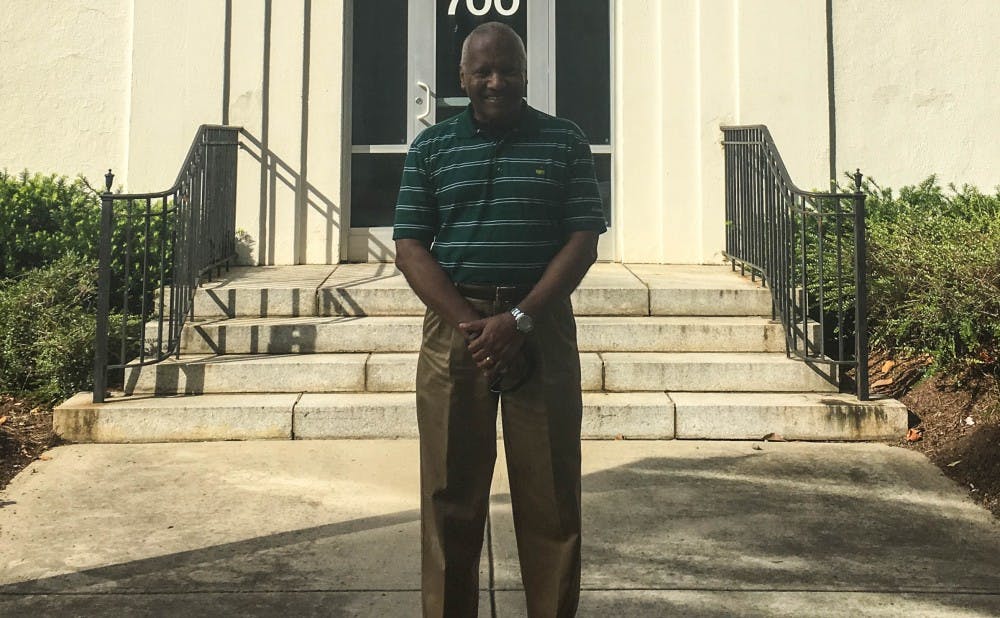From the Master's polo to the Harley bracelet, I knew a lot about Phail Wynn before I even shook his hand. And after talking about Durham with him, I realized there was a whole lot more to him than just golf and motorcycles.
Wynn is the outgoing vice president for Durham and regional affairs, a position he has held for a decade before he is set to retire June 30. Before working at Duke, the Oklahoma native was the President of Durham Technical Community College for nearly 30 years.
He agreed to let The Chronicle walk with him around Durham, where he pointed out spots his office has affected and talked about all things Durham, a city that has become "ingrained and embedded" in his soul.
DRA Office Building
DRA's office building is located in the old Liggett & Myers Tobacco Company headquarters at 700 West Main Street. When former President Richard Brodhead approached Wynn about leading the newly-created office, Wynn insisted on having a downtown office to better serve Durham.
In fact, Wynn was quick to note that his office was the first Duke office located downtown. Now, several Duke offices are situated there.
"I like to joke about the fact that after we set up downtown and I declared downtown safe, then everyone wanted to come downtown," Wynn said.
After considering a handful of options, Wynn chose the Liggett & Myers building, which had sat vacant for 15 years. Remarkably, much of the building remains just as it was, including the original wood paneling and the faded sign above the front of the building—minus the free samples of cigarettes.
What's even more remarkable is that the building itself was not constructed at 700 West Main, Wynn explained. It used to be located across the street, until 1946. Then, it got rolled to its present location—with the employees still inside working.
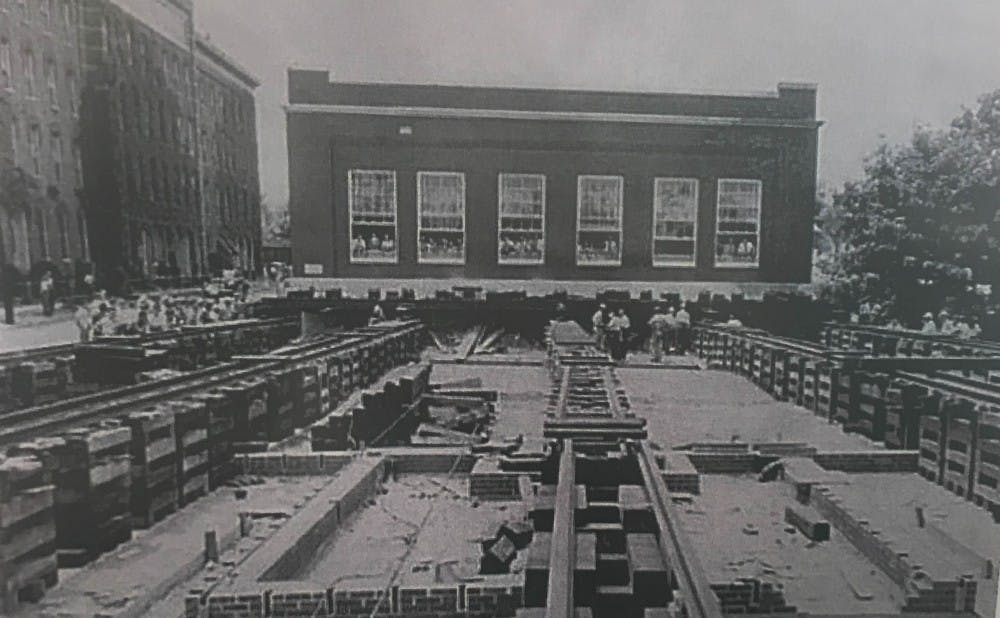
The Bull City Connector
Still standing in front of his office, we waited for the Bull City Connector, the bus that runs from Duke to the Golden Belt District every 20 minutes. It's not surprising that the the Bull City Connector is Wynn's favorite bus, since he was instrumental in its creation.
In 2008, Congressman David Price had landed a $3.75 million federal earmark for Durham to buy six hybrid diesel buses, but the city needed to match the commitment City Manager Tom Bonfield asked Duke to pitch in some of the money, and Wynn convinced Brodhead to fund the buses.
The Bull Connector pilot was launched with the goal of getting more Duke students out in Durham, providing easier access for downtown Duke employees and reducing Durham’s carbon footprint.
Duke has been providing $350,000 per year to help fund the bus line in cooperation with GoTriangle, but it plans to stop paying for the bus and use that money for shuttles instead.
Nevertheless, Wynn thinks the program was a successful pilot.
"We're satisfied with the role we played to get it off the ground and to provide that free service to folks that were moving to and fro between downtown east Durham and all the way down to Duke Hospital," he said.
In the middle of our conversation, a man pulled his car up next to us, asking Wynn if he knew where he could find parking.
Wynn said that not that long ago, he wouldn't have been asked that question. Parking used to be plentiful downtown every day of the week because there was simply nothing to do. Things have changed since.
"If we walk downtown from now until midnight, you won't find a place to park because there's so many folks here for the restaurants, shows and entertainment," Wynn said.
Wynn then listed some of his favorite spots to go out in Durham. For restaurants, his favorites include the James Joyce—"best fish and chips around"—Luna and the currently-closed Dame’s Chicken and Waffles. He also loves going out to the Carolina Theater and the old Durham Bulls Athletic Park.
He said Duke has fueled the downtown's revitalization by creating a "critical mass of employees" that has attracted investment in living and restaurants and entertainment.
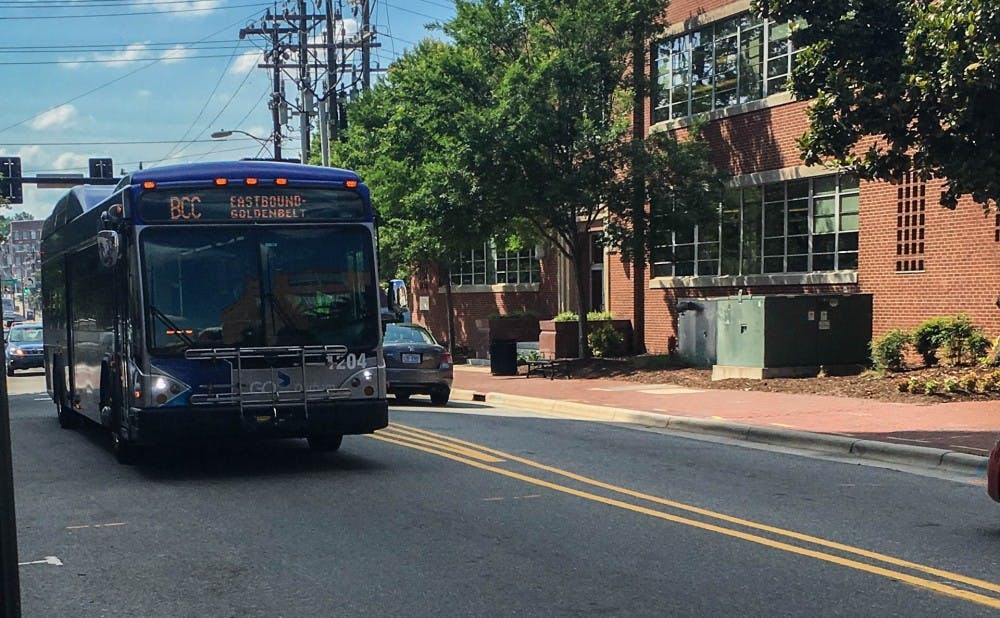
The Kent Street Corner
After a walk in the blazing Durham sun, we finally arrived at the corner of Duke University Road and Kent Street, our next destination. At the corner sit a host of new development projects, like Grub, Joe van Gogh and the Durham Cooperative Market. In fact, Wynn noted that the Kent Street Corner was his office's first development project.
"This is the entrance way to the University, and it was pretty unsightly," he said. "So that was the whole point of that investment—let's do something that the neighbors have dreamed about for quite some time but also something that not only improves the curb appeal, it provides a new aspect of economic development."
When Wynn took the position in 2008, the Self-Help Credit Union asked Duke for $4 million in addition to the $4 million Duke already loaned them every year. Wynn agreed to loan the extra money at zero percent interest, as long as half would go towards acquiring properties in the historically black Southside neighborhood and the other half would be used to redevelop the corner.
They agreed, and now the entrance to Duke has a restaurant, a coffee shop, a fresh produce market, and University offices.
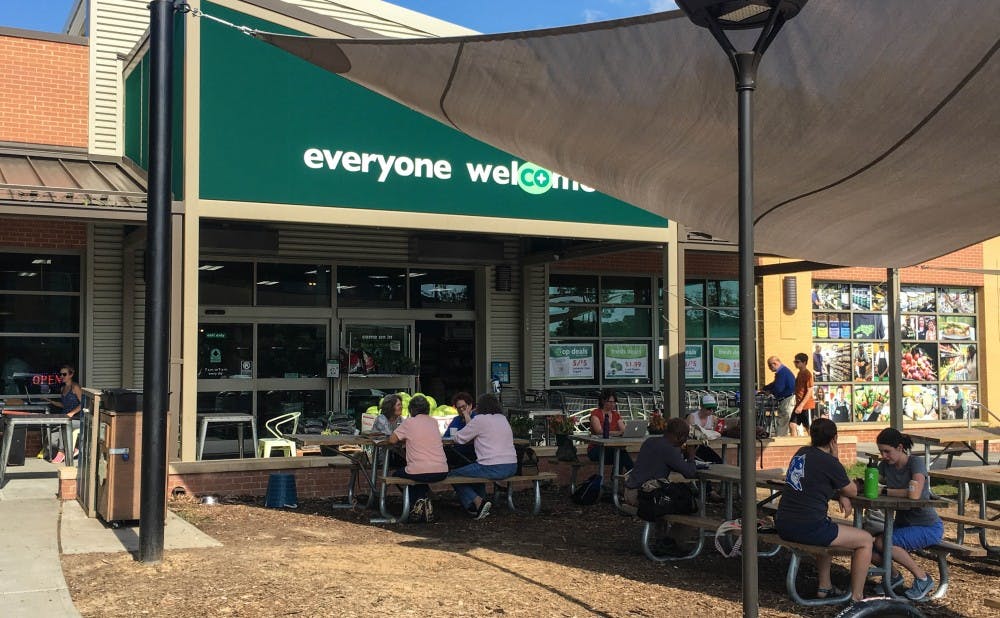
The Walk Back
On the walk back to his office, Wynn discussed his affinity for Durham and the city's impressive comeback from economic hardship.
"It's just such a wonderful melting pot, always has been, even historically," he said.
Wynn talked at length about Durham's recent economic growth. In the 1980s, he explained, Durham lost most of its high-paying tobacco manufacturing and textile jobs. Despite the tobacco jobs having starting salaries of around $40,000, most of those workers did not have high school diplomas or transferrable skills. The city fell on hard times.
As president of the local community college, Wynn worked with the tobacco companies to organize job re-training efforts. However, he claimed that what really helped bring Durham back was its educational assets—Duke and North Carolina Central University. In the past decade, more undergraduate students started giving back to the city, and more students were staying in the community after graduation to start businesses.
"Truly the most important asset that Duke has for the city of Durham is the 'double E's and the double I's,'" he said. "Energy and enthusiasm and the intellect and idealism of our undergraduate students who have a passion for making a difference."
When Wynn began at Duke ten years ago, relations between Duke and Durham were nothing like they are today.
Chuckling, he admitted that the relationship was “contentious, strained, broken in a way" in the aftermath of the lacrosse scandal. After a year going around to community leaders on a listening tour, Wynn realized that the University had to repair its "arrogant, uncaring and aloof" image. He has worked ever since on rebuilding trust through investing in the community and encouraging Duke visibility in the city.
Wynn's happy of the progress that has been made in getting students and employees out in Durham.
"Slowly but surely that's happened, and I'm pleased with where things are now, in terms of the closeness of the connections and the trust that's been rebuilt," he said.
The Chesterfield Building
The last stop on Wynn's tour was the Chesterfield building, the once-abandoned Liggett & Myers cigarette manufacturing building that has been redeveloped with research laboratories, offices and retail spaces.
The 500,000 square foot building stands imposingly across from the DRA office, and Wynn said it had posed a major challenge to investors who were wary of repurposing it.
He mentioned that Duke had to agree to be a major tenant in the building to attract outside investors. He was proud of the fact that the historical building was able to become viable again without being torn down.
Wynn told me that touring the Chesterfield after it closed down was "eerie."
"I went in there when I first came back to Durham to take a look at it, and it was almost as if there was some cataclysmic event there that caused an immediate evacuation of the building," he said.
Papers, cigarettes and coffee cups with coffee stains were left as if frozen in time. Now, the Chesterfield will house research on life sciences.

After an hour of walking and talking, we end up back in his office, where we discussed his retirement and our mutual love for Star Wars. We both liked the latest Star Wars movies—minus Solo, which we hadn't seen yet.
He says he is not fully retiring. In between traveling to Eastern Europe and riding his five motorcycles, he will be working with a collaborative affordable housing strategy group that he convened. Despite stepping away from his vice presidency, Wynn isn't stepping away from Durham.
Get The Chronicle straight to your inbox
Signup for our weekly newsletter. Cancel at any time.
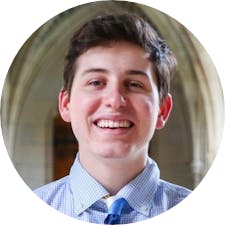
Jake Satisky is a Trinity senior and the digital strategy director for Volume 116. He was the Editor-in-Chief for Volume 115 of The Chronicle.

